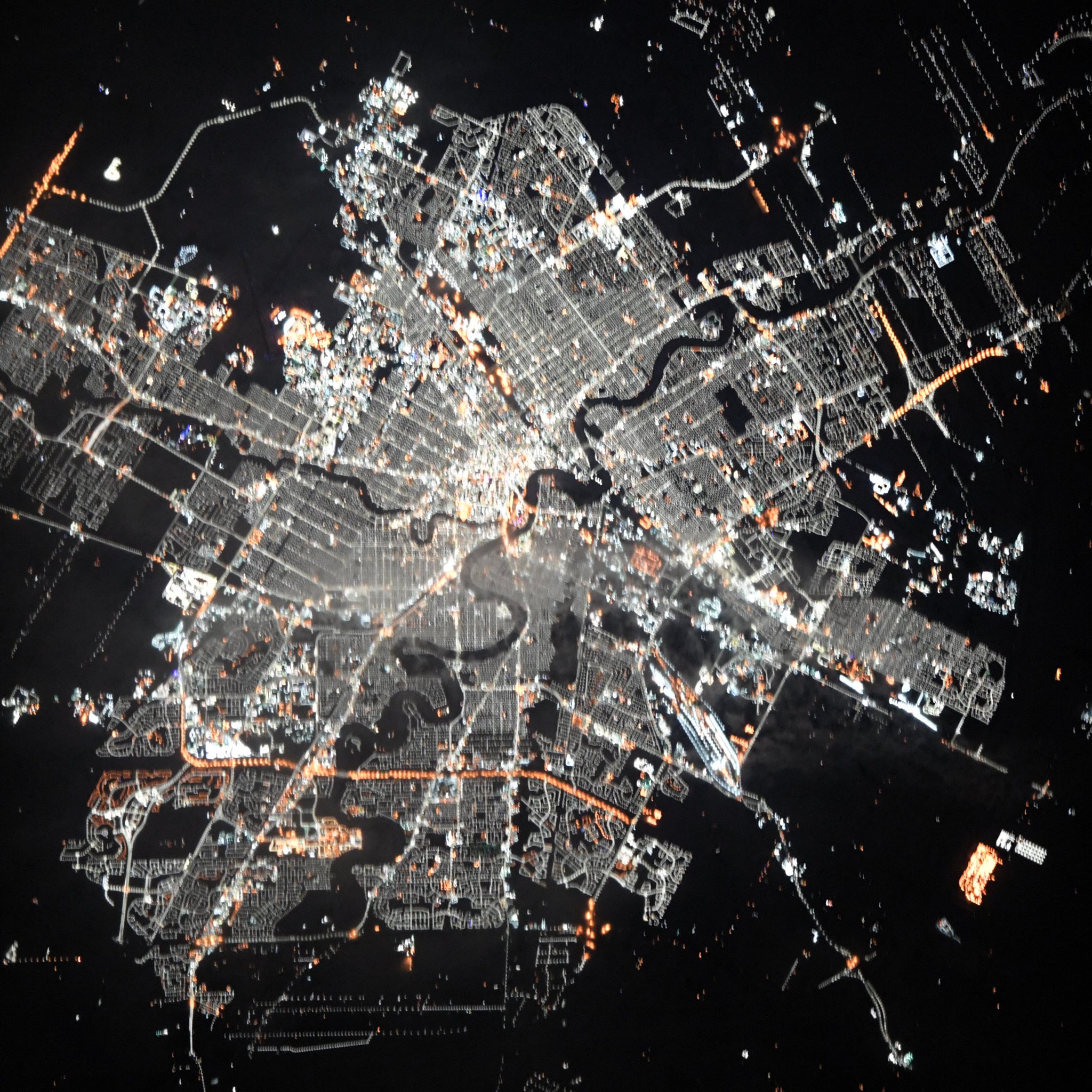[:ja]ジェシカ・メイヤー宇宙飛行士がISSから撮影したカナダのウィニペグです。

ウィニペグは、カナダのマニトバ州の州都で都市人口約80万人を擁します。もともとはファースト・ネーションが住み、カヌーを移動手段として狩猟採集による生活をしていましたが、1738年に初めて交易所がフランス系の会社によって建設されると、それ以降多くの民族が移住してきました。21世紀に入って移民受け入れも多くなったことなどから人口増加が続き発展を見せています。ウィニペグは米国との国境の北約100kmのプレーリー地帯の一角に位置しています。周囲は平原でレッド川流域として知られる肥沃な農地帯でもあり、カナダの小麦生産地帯の中核都市、農産物の流通の中心でもあります。また、東部カナダと西部カナダを結ぶ起点であり、マニトバ湖やウィニペグ湖の南に位置していることから交通の拠点となりました。北米の中央部に位置するため、極めて顕著な大陸性気候であり、冬季は極北地域を除き北米で最も寒い都市であります。
地上の様子はこちらです。

参考文献: Jessica Meir’s Tweet
地球俯瞰画像を見る: LiVEARTH
[Earthview Wonders] No.1217: Winnipeg🇨🇦
Astronaut Jessica Meir captured from ISS Winnipeg, Canada.

Winnipeg is the capital and largest city of the province of Manitoba in Canada. It is centered on the confluence of the Red and Assiniboine rivers, near the longitudinal center of North America. The city is named after the nearby Lake Winnipeg; the name comes from the Western Cree words for muddy water. The region was a trading centre for Indigenous peoples long before the arrival of Europeans. French traders built the first fort on the site in 1738. Known as the “Gateway to the West”, Winnipeg is a railway and transportation hub with a diversified economy. This multicultural city hosts numerous annual festivals, including the Festival du Voyageur, the Winnipeg Folk Festival, the Jazz Winnipeg Festival, the Winnipeg Fringe Theatre Festival, and Folklorama. Winnipeg is an economic base and regional center, and has one of the country’s most diversified economies, with major employment in the trade, manufacturing, educational, and health care and social assistance sectors.
The local scenery on the ground is as follows.

Reference: Jessica Meir’s Tweet
See earthview photo gallery: LiVEARTH[:]